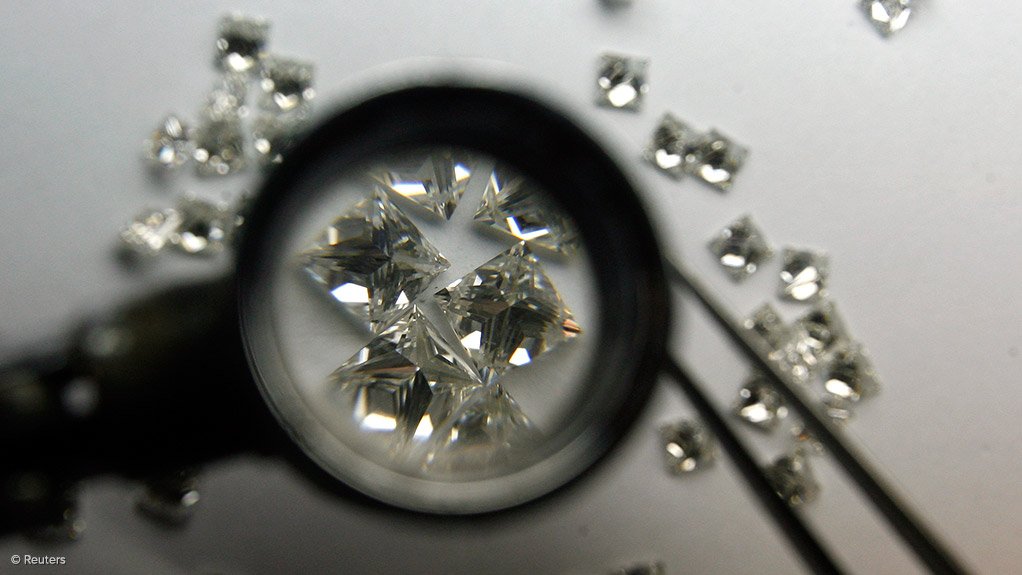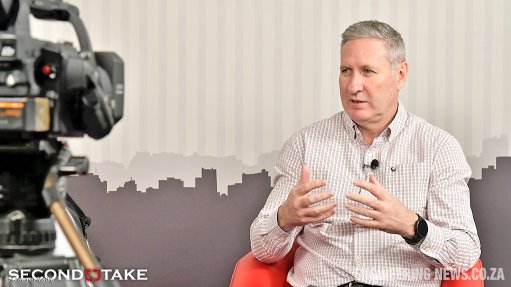Diamond mining may threaten Namibia’s coastline


ENVIRONMENTAL IMPACT Diamond mining in the Benguela Current Large Marine Ecosystem involves the discharge of tailings into the marine environment
Photo by Reuters
The Benguela Current Commission (BCC), a multisectoral intergovernmental initiative of Angola, Namibia and South Africa, could play a role in coordinating studies that monitor the impact of mining on the marine environment.
The BCC is responsible for coordinating the efforts of the three countries in addressing the transboundary environmental issues that affect the Benguela region. The commission has a mandate to use the best available scientific evidence to advise the governments on the best course of action to take.
Transboundary issues are those that affect one or more countries in the Benguela region, such as marine diamond mining, which is conducted in both Namibia and South Africa. Therefore, monitoring environmental impacts is one of the areas of interest for the BCC.
For example, the commission would be in a position to advise the governments about the proximity of mining operations to sensitive areas or biodiversity hot spots.
“We are coordinating a large mapping project, which aims to identify sensitive areas and potential protected areas across the Benguela Current Large Marine Ecosystem (BCLME),” says BCC executive secretary Dr Hashali Hamukuaya. The BCLME geo- graphically covers Angola, South Africa and Namibia.
Near-shore and coastal diamond mining in the BCLME involves the discharge of tailings – generally sediments – into the marine environment. In the past, concerns have been raised about the impact of discharging these tailings into the marine environment, especially into the habitat of rock lobster.
Hamukuaya highlights that the BCLME is one of the most productive marine ecosystems on earth and a globally significant centre for marine biodiversity. “It is also worth noting that Namibia has placed a moratorium on mining the seabed for phosphates, partly because of the closeness of the mining area to fishing activities and nursery areas for certain deep-sea fish species,” he says.
The BCC supports Namibia’s application of the precautionary principle, which stipu- lates that mining practices should not be undertaken if the consequences remain uncertain or if the action is potentially dangerous to the health of the environment.
Coastline Mining
A 2006 study of the cumulative effects of tailings from diamond mining, conducted by South African research organisation the Council for Scientific and Industrial Research (CSIR), found that fine sediment produced by simultaneous vessel- and land-based mining operations could have a cumulative negative effect on the environment.
Although the study found that this effect would be minor, the cumulative effects of discharging course sediments could be more significant. Some of the southern Namibian mining operations are connected through littoral sand transport. As a result of this connectivity, mine sand discharges can potentially result in cumulative effects.
The study provided several detailed recommendations for further monitoring and modelling, and suggested that mining compa- nies have the opportunity to mitigate the effects of discharged sediment using appro- priate management processes.
Moreover, the study found that discharging mine tailings at a littoral site that is exposed to waves will result in a more rapid dispersion of fine material than if the mine tailings were discharged at a wave-sheltered site, which, in turn, will result in lower concentrations being experienced near the discharge point.
The study recommended that mine modelling should be employed for mining companies to site fine and coarse sediment discharges relative to sensitive areas, such as power station water intakes and estuaries.
Elevated concentrations of fine sediment should be limited to within a few hundred metres of the discharge location. This provides a rough guideline for fine sediment discharges relative to sensitive areas and/or relative to existing fine sediment discharges.
Mining companies could consider the potential discharge of mine tailings into mined-out areas. However, they should also consider the salinity of associated groundwater effects, as well as the composition of sediment, to avoid the formation of a bog containing excessive fine sediment, the study found.
Mining companies could also consider the mechanical management of tailings through thickening or degrit processes, for example. Further, they could consider using bulldozers and dredging to aid the process of natural erosion and mitigate the retreat of accreted beaches.
About the BCC
The BCC promotes the sustainable management and protection of the BCLME and provides a platform for Angola, Namibia and South Africa to introduce an ecosystem approach to ocean governance.
This means that, instead of managing living and nonliving resources at national level, the three countries can work together to tackle environmental challenges that impact on the marine environment at a continental level.
The commission focuses on managing shared fish stocks, environmental monitoring, biodiversity and ecosystem health; mitigating pollution; reducing the impact of marine mining and oil and gas production; as well as capacity building.
Article Enquiry
Email Article
Save Article
Feedback
To advertise email advertising@creamermedia.co.za or click here
Comments
Announcements
What's On
Subscribe to improve your user experience...
Option 1 (equivalent of R125 a month):
Receive a weekly copy of Creamer Media's Engineering News & Mining Weekly magazine
(print copy for those in South Africa and e-magazine for those outside of South Africa)
Receive daily email newsletters
Access to full search results
Access archive of magazine back copies
Access to Projects in Progress
Access to ONE Research Report of your choice in PDF format
Option 2 (equivalent of R375 a month):
All benefits from Option 1
PLUS
Access to Creamer Media's Research Channel Africa for ALL Research Reports, in PDF format, on various industrial and mining sectors
including Electricity; Water; Energy Transition; Hydrogen; Roads, Rail and Ports; Coal; Gold; Platinum; Battery Metals; etc.
Already a subscriber?
Forgotten your password?
Receive weekly copy of Creamer Media's Engineering News & Mining Weekly magazine (print copy for those in South Africa and e-magazine for those outside of South Africa)
➕
Recieve daily email newsletters
➕
Access to full search results
➕
Access archive of magazine back copies
➕
Access to Projects in Progress
➕
Access to ONE Research Report of your choice in PDF format
RESEARCH CHANNEL AFRICA
R4500 (equivalent of R375 a month)
SUBSCRIBEAll benefits from Option 1
➕
Access to Creamer Media's Research Channel Africa for ALL Research Reports on various industrial and mining sectors, in PDF format, including on:
Electricity
➕
Water
➕
Energy Transition
➕
Hydrogen
➕
Roads, Rail and Ports
➕
Coal
➕
Gold
➕
Platinum
➕
Battery Metals
➕
etc.
Receive all benefits from Option 1 or Option 2 delivered to numerous people at your company
➕
Multiple User names and Passwords for simultaneous log-ins
➕
Intranet integration access to all in your organisation


















